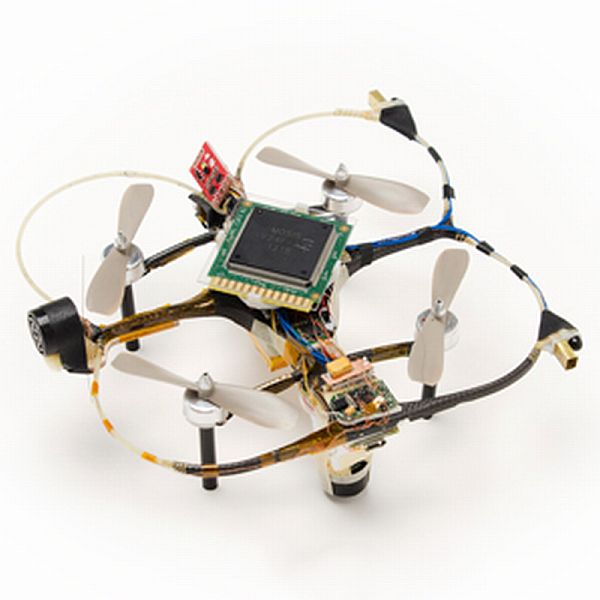Human brain mechanics has always been one of the most fascinating subjects for neuroscientists all across the globe. Many simulators and robots have been designed by mimicking neurons and synapses, yet the efficiency of brain has not yet thoroughly touched upon so far.
In an attempt of mimicking brain, bioengineers at Stanford University had developed faster and energy-efficient microchips. There are similar other ambitious projects, which are currently going on in labs, and amongst such innovative works are neuromorphic chips. Like human brain, these chips are embedded with ‘neurons’. Communication within the network is noted as a means of electrical spikes. They not only are energy efficient but also have the potential of reprogramming themselves for acquiring new skill.
Neuromorphic chip mounted on a drone
Unlike the other similar projects, a neuromorphic chip has gained promotion by stepping out the lab. It has been tested, though not on a large scale, on a drone, which weighs not more than 100 grams.
The prototype chip consists of 576 silicon neurons. As the aircraft covered the three rooms that were set for the experiment, the chip was able to imbibe data from the drone’s optical, ultrasound and infrared sensors.
The three rooms were laden with furniture and other stuff, as the drone ventured into the rooms, the physical objects observed by the sensors created a form of a pattern that was registered in form of an electrical activity in the chip’s neurons. The physical information was simultaneously dispersed within the entire neural network, which lead to its learning of new space. This insinuated that if next time, the drone enters the same room, it will recognize the physical surroundings and accordingly signal in the same fashion, a phenomena similar to human brain.
Technology is in its infancy
As per Narayan Srinivasa, one of the lead researcher at HRL’s Center for Neural and Emergent Systems, the chip is still in its nascent stage and so is far from any practical deployment. However, the experiment proves the chip’s potentiality to learn on the fly even under power constraints, which is indeed a good sign, added Srinivasa.
The drone for the experiment was custom built by Aerovironment, a California based manufacturer of Unmanned Aircraft Systems. The aircraft along with its battery weighs around 93 grams and is six inches square and 1.5 inches high. While the chip weighs 18 grams and consumed not more than 50 milliwatts of power. This makes it one of the most efficient systems for learning at such a puny power unit.
A chip for machine thinking
Researchers envision that this technology might make it possible for surveillance drones across the space to decide on their own by making sense of video and sensor data instead of reflecting the data back to earth for analysis.
As mentioned earlier, the technology is still in its infancy, collaborative work is yet to be done from both the circuit, and algorithm experts as well as the neuroscience community said Vishal Saxena, an assistant professor working on neuromorphic chips at Boise State University. However, GM and Boeing from the HRL Laboratories are already looking forward to commercialize the technology.
We are creating neural network for machine thinking, is this progress or are we heralding the era of Terminators?
Source: MIT Technology Review




